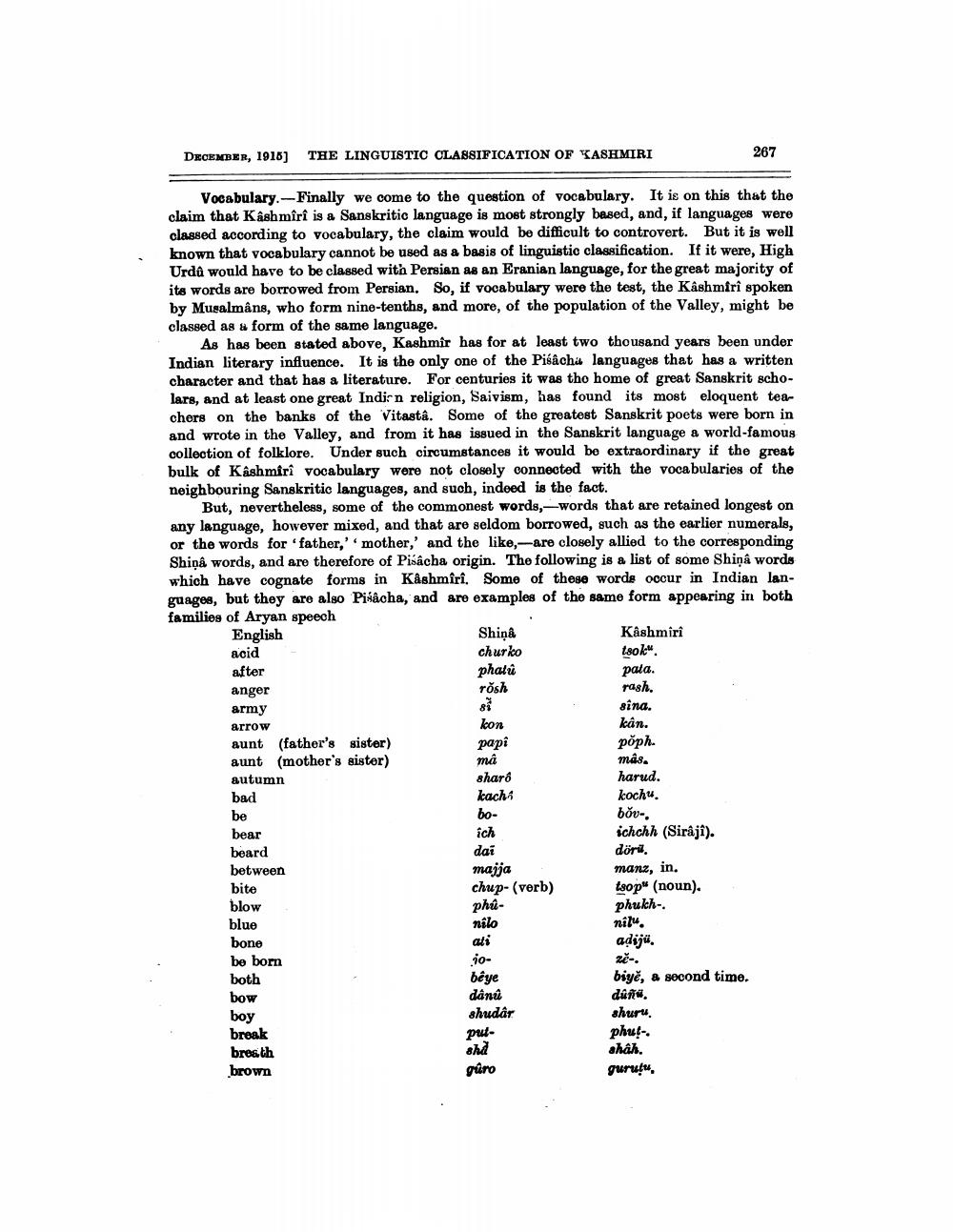________________
DECEMBER, 1916]
THE LINGUISTIC CLASSIFICATION OF WASHMIRI
267
Vocabulary.-Finally we come to the question of vocabulary. It is on this that the claim that Kashmîrî is a Sanskritic language is most strongly based, and, if languages were classed according to vocabulary, the claim would be difficult to controvert. But it is well known that vocabulary cannot be used as a basis of linguistic classification. If it were, High Urdû would have to be classed with Persian as an Eranian language, for the great majority of its words are borrowed from Persian, So, if vocabulary were the test, the Kashmirî spoken by Musalmans, who form nino-tenths, and more, of the population of the Valley, might be classed as a form of the same language.
As has been stated above, Kashmîr has for at least two thousand years been under Indian literary influence. It is the only one of the Pisachis languages that has a written character and that has a literature. For centuries it was tho home of great Sanskrit scholars, and at least one great Indirn religion, Saivism, has found its most eloquent teachers on the banks of the Vitasta. Some of the greatest Sanskrit poets were born in and wrote in the Valley, and from it has issued in the Sanskrit language a world-famous collection of folklore. Under such circumstances it would be extraordinary if the great bulk of Kashmiri vocabulary were not closely connected with the vocabularies of the neighbouring Sanskritic languages, and such, indeed is the fact.
But, nevertheless, some of the commonest words,-words that are retained longest on any language, however mixed, and that are seldom borrowed, such as the earlier numerals, or the words for 'father,' mother, and the like,-are closely allied to the corresponding Shiņå words, and are therefore of Pisacha origin. The following is a list of some Shiņā words which have cognate forms in Kashmîrî. Some of these words occur in Indian languages, but they are also Pikacha, and are examples of the same form appearing in both families of Aryan speech English
Shiņa
Kashmir acid
churko after
phatú
pata. anger
Tosh
rash. army
sina. arrow
kon
kan. aunt (father's sister)
pop. aunt (mother's sister)
ma
mas. autumn
sharo
harud. bad
kach
kochu. be
bo
bovbear
ich
ichchh (Sirâjî). beard
dai
döri. between
majja
manz, in. bite
chup- (verb) tsop" (noun). blow
phukhblue
nilo
nitu. bone
ati
adiju. be born
10
zē. both
beye
biyč, a second time. danú
dúnu. boy
shudar
shuru. break
phu. breath
ahah. brown
guro
gurutu.
Isok".
papi
pha
bow
pout
end




